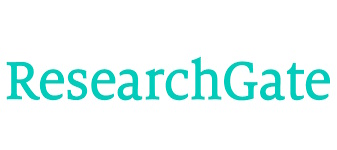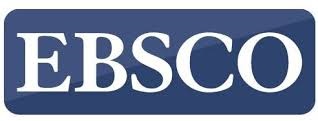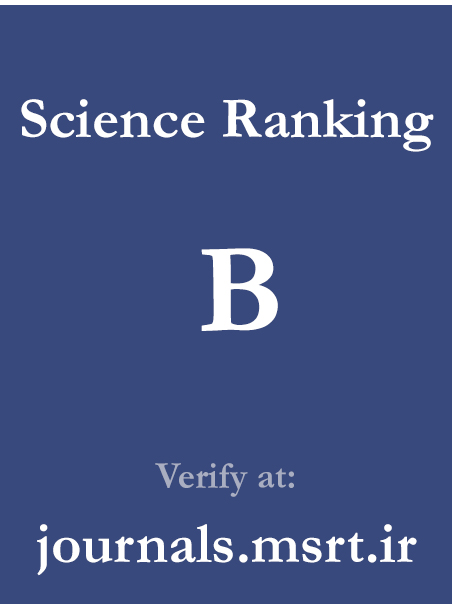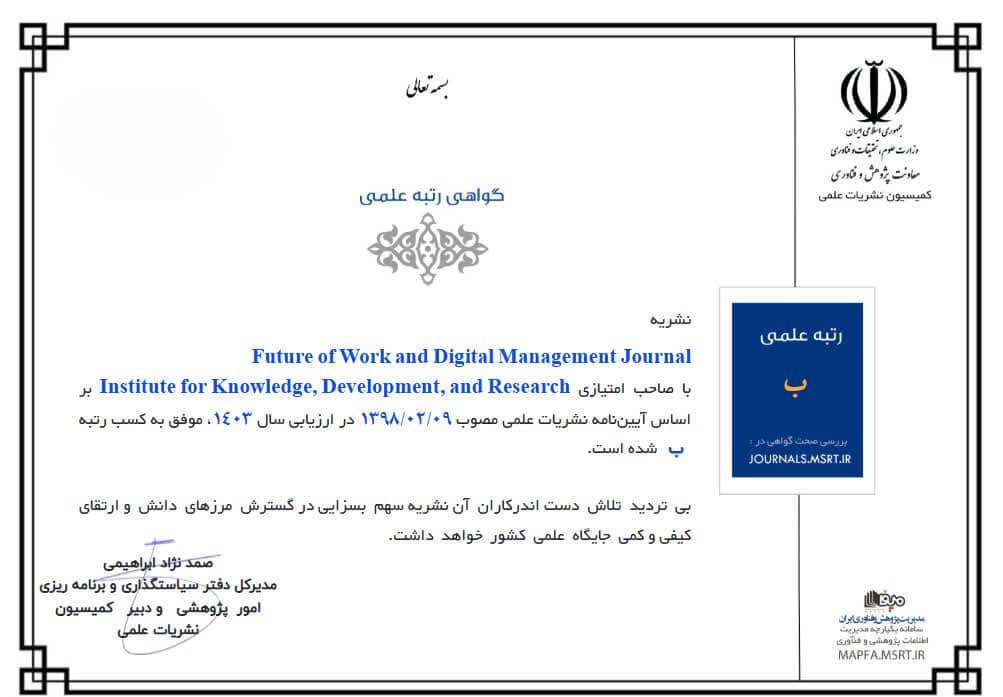The Role of Strategic Control Levers on Organizational Project Performance: The Mediating Effect of Strategic Agility
Keywords:
Strategic control, belief systems, organizational project performance, boundary systems, diagnostic control, interactive control, strategic agilityAbstract
This study aimed to investigate how strategic control levers—belief systems, boundary systems, diagnostic control systems, and interactive control systems—affect the performance of organizational projects, emphasizing the mediating role of strategic agility in balancing innovation, adaptability, and operational stability. This applied research followed a descriptive–correlational design and was conducted as a field study among employees of Bank Sepah branches in Khorasan Razavi Province. The statistical population consisted of 2,400 staff members, from which a sample of 400 was selected using Morgan’s table and random sampling to account for potential non-responses; 340 valid questionnaires were analyzed. A structured survey measured strategic control levers as independent variables, strategic agility as the mediator, and organizational project performance as the dependent variable. Data reliability and validity were ensured through composite reliability, convergent and discriminant validity checks, while structural equation modeling (SEM) with SMART PLS software was applied to test the hypothesized relationships and mediating effects using bootstrapping and determination coefficients (R²). The analysis confirmed that strategic control levers have a significant and positive impact on organizational project performance. Specifically, belief systems and interactive controls were positively associated with opportunity exploration and adaptability, while boundary and diagnostic controls contributed to focus and alignment. Strategic agility itself showed a strong positive and direct effect on performance and mediated the relationship between the control levers and project outcomes. This mediation indicated that organizations leveraging a balanced mix of controls foster responsiveness to environmental change, reduce vulnerability to disruption, and support sustained innovation while maintaining operational effectiveness. The study highlights that combining different strategic control levers can create the dynamic tension necessary for both control and flexibility, enabling organizations to remain competitive and resilient. Strategic agility acts as a critical capability linking managerial control systems to superior project outcomes in volatile environments.
Downloads
References
[1] E. Tenggono, B. W. Soetjipto, and L. Sudhartio, "Dynamic Managerial Capabilities In action: Advancing Strategic Agility and Digital Readiness in Healthcare Organizations," Journal of Organizational Change Management, 2025, doi: 10.1108/jocm-12-2024-0772.
[2] W. Shao, "The Role of Digital Transformation in Enhancing Organizational Agility and Competitive Advantages: A Strategic Perspective," Advances in Economics Management and Political Sciences, vol. 154, no. 1, pp. 115-120, 2025, doi: 10.54254/2754-1169/2024.19552.
[3] W. B. Gunawan, "Strategic and Sustainable Human Resource Management: Twin Weapon for Achieving Competitive Advantage in Organization," Priviet Social Sciences Journal, vol. 5, no. 6, pp. 45-58, 2025, doi: 10.55942/pssj.v5i6.401.
[4] A. Barrichello, F. R. Morales, and G. M. D. Freitas, "Managerial competencies determining organizational strategic orientation in micro and small enterprises," Forensic Research and Criminology International Journal, vol. 13, no. 1, pp. 1-8, 2025, doi: 10.15406/frcij.2025.13.00431.
[5] N. Sinai, "Management Accounting and Strategic Management Accounting: The Role of Organizational Culture and Information Systems," Prophet Muhammad (PBUH) Institute of Higher Education, Tabriz, Master's thesis, 2024.
[6] M. Orero-Blat, A. L. Leal‐Rodríguez, and D. Palacios-Marqués, "The Strategic Advantage of Innovative Organizational Culture: An Exploratory Analysis in Digital Transformation and Big Data Analytics Capabilities," Journal of Management & Organization, pp. 1-20, 2024, doi: 10.1017/jmo.2024.74.
[7] R. Zare and A. Hashemi, Strategic Control Levers. Tehran: Cultural Research Bureau, 2022.
[8] P. Weill, M. Subramani, and M. Broadbent, "IT infrastructure for strategic agility," ed, 2022.
[9] H. Mintzberg, The Strategy Safari: A Guided Tour Through the Wilds of Strategic Management. Tehran: Pardis 57 Company, 2022.
[10] E. Malek Akhlaq, S. S. Voshaei Nejad, and M. Hatami Nejad, "The Impact of Entrepreneurial Orientation and Strategic Agility with Business Model Innovation and Learning Capability on Firm Performance," Business Management Explorations, vol. 14, no. 28, pp. 31-74, 2022.
[11] A. Kelabi, "An Organizational Commitment Model Explaining the Position of Organizational Innovation, Organizational Culture, Corporate Social Responsibility, and Value Co-creation," ed, 2022.
[12] J. D. Hunger, Fundamentals of Strategic Management. Tehran: Cultural Research Bureau, 2022.
[13] J. F. Henri, "Organizational culture and performance measurement systems," Account. Organ. Soc., vol. 31, no. 1, pp. 77-103, 2022.
[14] E. Golmohammadi, E. Mohammadi, and Z. Tolabi, "The Antecedents and Consequences of Strategic Agility with a Dynamic Capabilities Approach in Banks Operating in Ilam Province," Science and Technology Policy Quarterly, vol. 12, no. 1, pp. 23-42, 2022.
[15] R. S. Allen, G. Dawson, K. Wheatley, and C. S. White, "Perceived Diversity and Organizational Performance," EmployeeRelations, vol. 30, no. 1, pp. 20-33, 2022.
[16] H. Ahmadi Baladeh and S. Khalil Nejad, "The Impact of Exploratory Learning and Strategic Agility on Business Model Innovation," 2022.
[17] T. Yildiz and Z. Aykanat, "The mediating role of organizational innovation on the impact of strategic agility on firm performance," World Journal of Entrepreneurship, Management and Sustainable Development, vol. 17, no. 4, pp. 765-786, 2021, doi: 10.1108/WJEMSD-06-2020-0070.
[18] M. W. Lewis, C. Andriopoulos, and W. K. Smith, "Paradoxical leadership to enable strategic agility," California management review, vol. 56, no. 3, pp. 58-77, 2023.
[19] P. Hersey and K. Blanchard, Management of Organizational Behavior. Tehran: Amir Kabir Publications, 2023.
[20] S. Gorjipour, "Organizational Transformation with Attention to Organizational Culture Management and Transformational Leadership," Scientific, Research, and Information Journal of Management (Special Issue on the National Conference on Organizational Culture), no. 190, pp. 142-145, 2023.
[21] V. J. García-Morales, F. Matías-Reche, and N. Hurtado-Torres, "Influence of transformational leadership on organizational innovation and performance depending on the level of organizational learning in the pharmaceutical sector," Journal of Organizational Change Management, vol. 21, no. 2, pp. 188-212, 2023.
[22] F. R. David, Strategic Management. Tehran: Cultural Research Bureau, 2023.
[23] S. Pourghafari, S. Manzari Tavakoli, S. Salajegheh, and S. Dehghani, "The Impact of Organizational Culture on Employee Voice, with the Mediation of Employee Empowerment," Journal of Management Studies for Improvement and Transformation, vol. 32, no. 108, pp. 223-273, 2024.
[24] R. H. Chenhall, "Management control systems design within its organizational context: Findings from contingency-based research and directions for the future," Accounting, Organizations and Society, vol. 28, no. 2-3, pp. 127-168, 2021.
[25] A. Neely and C. Adams, "The Performance Prism in Practice, Measuring Busness Excellence," ed, 2021, pp. 6-12.
[26] J. B. Quinn, H. Mintzberg, and R. M. James, Strategic Management. Tehran: Institute for Management and Planning Studies, 2021.
[27] S. Nasrin, "Role of Middle Managers in Strategic Organizational Changes: A Conceptual Review," Archives of Business Research, vol. 13, no. 3, pp. 01-10, 2025, doi: 10.14738/abr.133.18394.
[28] R. Balachandra and M. Pinowski, "Strategic control system use in healthcare: A systematic review," Journal of Health Organization and Management, vol. 35, no. 2, pp. 123-140, 2021.
[29] M. Alipour Roudposhti, "Investigating the Relationship between Transformational Management and Strategic Agility in Tehran Municipality," Eyvanekey University, 2021.
[30] G. F. Delfino and B. van der Kolk, "Remote working, management control changes and employee responses during the crisis," Accounting, Auditing & Accountability Journal, vol. 34, no. 6, pp. 1376-1387, 2021.
[31] H. C. Hou, H. Remøy, T. Jylhä, and H. Vande Putte, "A study on office workplace modification in The Netherlands," Journal of Corporate Real Estate, vol. 23, no. 3, pp. 186-202, 2021.
[32] N. Goetz and A. Wald, "Employee performance in temporary organizations - the effects of person-environment fit and temporariness on task performance and innovative performance," ed, 2020.
[33] S. H. Park, P. J. Lee, B. K. Lee, M. Roskams, and B. P. Haynes, "Associations between job satisfaction, job characteristics, and acoustic environment in open-plan offices," Applied Acoustics, vol. 168, p. 107425, 2020.
[34] R. Shams, D. Vrontis, Z. Belyaeva, A. Ferraris, and M. R. Czinkota, "Strategic agility in international business: A conceptual framework for "agile" multinationals," Journal of International Management, vol. 27, no. 1, 2020.
[35] K. Lukka, "Management accounting change and stability: Loosely coupled rules and routines in action," Management Accounting Research, vol. 18, no. 1, pp. 76-101, 2020.
[36] P. A. Lill, A. Wald, and C. Munck, "In the field of tension between creativity and efficiency: a systematic literature review of management control systems for innovation activities," ed, 2020.
[37] M. Vishlaghi, M. Zarei, and D. Fayz, "Designing a Strategic Agility Model in Relation to Sustainable Production Prosperity Based on Grounded Theory (Case Study: Automotive Industries)," Journal of Management Improvement Studies, vol. 15, no. 2, pp. 127-153, 2021.
[38] H. Isazadeh, G. Bagheri Ragheb, A. Kord Naeej, A. Karimi, and M. Soltani, "Designing a Model for the Antecedents and Consequences of Strategic Agility in Small and Medium-Sized Sports Businesses," Journal of Sport Management Studies, vol. 13, no. 67, pp. 202-224, 2021.
Downloads
Published
Submitted
Revised
Accepted
Issue
Section
License
Copyright (c) 2025 Seyyed Mohammad Bavandi Sani, Hossein Rahman Seresht (Author)

This work is licensed under a Creative Commons Attribution-NonCommercial 4.0 International License.







